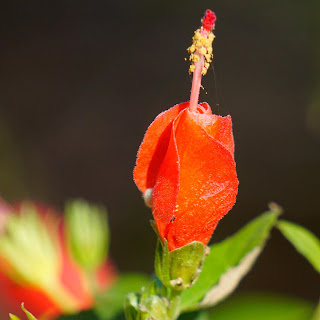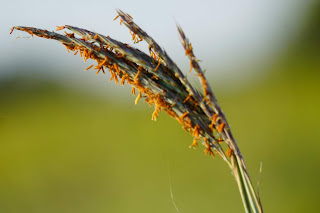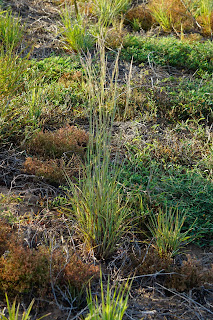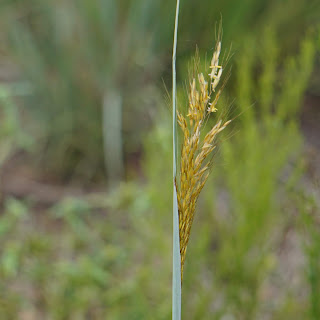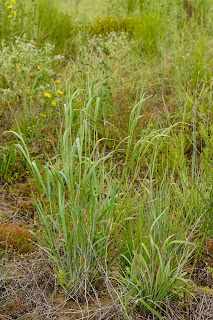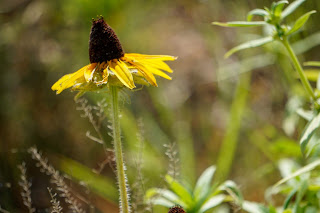The colors of fall around the Creech place include a few that have been planted for their showiness. The Turk's Cap below is a native Texas plant that we placed in the bed by the front porch.
The fire spike was propagated from cuttings shared by a fellow Master Gardener last fall. These also are lined up in a flowerbed in front of the house.
The zinnas, a favorite of the Pipevine Swallowtail, are growing in the vegetable beds out front in lieu of a fall garden.
But some of the things around are going in the field, and they portend a field of prairie grasses over the next few years. Here the Side Oats Grama retain some of their seeds as winter approaches.
The False Golden Asters, along with Camphor Weed and Cowpen Daisies have added their bright yellows to the fall fields.
Easter Gamma Grass shows up across the field with its distinctive seed pods.
Everywhere there is a bare spot, the Bluebonnets are making their appearance, waiting for March to astound us.
I'm not sure what this forb is. But the light plays with it well.
Remnants of Maximillian Sunflowers stand watch over much of the field.
Yellow Indian Grass is among the most beautiful of the grasses when it is blooming. Lots of this has appeared in the first year. It will be taller and more evident in the next year or two.
I think this is a head of Green Spangletop. A stand of this showed up across the front of the field nearest the house, and is one of the seeds in the mix we planted last year.
The Little Bluestem is the most plentiful of the grasses that have emerged. In the winter it takes on a rich rusty brown color that is easy to spot along roadsides in Texas.
